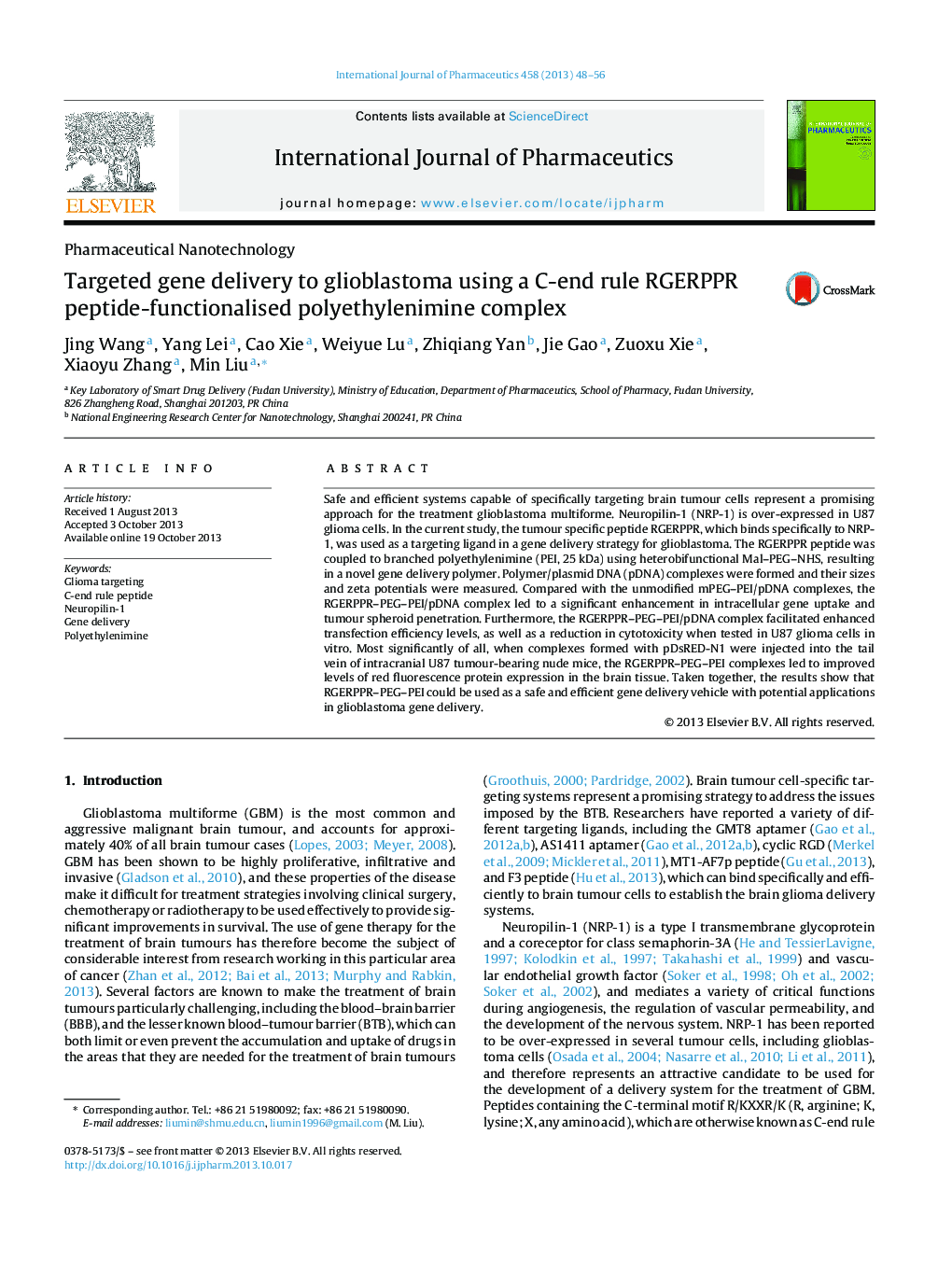| Article ID | Journal | Published Year | Pages | File Type |
|---|---|---|---|---|
| 2502067 | International Journal of Pharmaceutics | 2013 | 9 Pages |
Safe and efficient systems capable of specifically targeting brain tumour cells represent a promising approach for the treatment glioblastoma multiforme. Neuropilin-1 (NRP-1) is over-expressed in U87 glioma cells. In the current study, the tumour specific peptide RGERPPR, which binds specifically to NRP-1, was used as a targeting ligand in a gene delivery strategy for glioblastoma. The RGERPPR peptide was coupled to branched polyethylenimine (PEI, 25 kDa) using heterobifunctional Mal–PEG–NHS, resulting in a novel gene delivery polymer. Polymer/plasmid DNA (pDNA) complexes were formed and their sizes and zeta potentials were measured. Compared with the unmodified mPEG–PEI/pDNA complexes, the RGERPPR–PEG–PEI/pDNA complex led to a significant enhancement in intracellular gene uptake and tumour spheroid penetration. Furthermore, the RGERPPR–PEG–PEI/pDNA complex facilitated enhanced transfection efficiency levels, as well as a reduction in cytotoxicity when tested in U87 glioma cells in vitro. Most significantly of all, when complexes formed with pDsRED-N1 were injected into the tail vein of intracranial U87 tumour-bearing nude mice, the RGERPPR–PEG–PEI complexes led to improved levels of red fluorescence protein expression in the brain tissue. Taken together, the results show that RGERPPR–PEG–PEI could be used as a safe and efficient gene delivery vehicle with potential applications in glioblastoma gene delivery.
Graphical abstractFigure optionsDownload full-size imageDownload high-quality image (206 K)Download as PowerPoint slide
